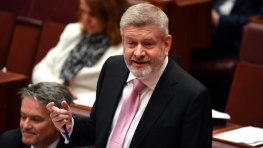
Community broadcasting set to receive $12m in extra funding and community TV licence extension
As part of negotiations to pass the Government's proposed media reforms in the Senate yesterday, additional support will be provided to the community broadcasting sector.
The Senate has passed the Broadcasting Legislation Amendment (Broadcasting Reform) Bill 2017, amending the Broadcasting Services Act 1992 and impacting on media ownership and diversity regulations applicable to commercial broadcasters.
Key changes include:
- Abolishing the 75% audience reach rule, which prohibits commercial TV licensees from controlling licences whose combined licence area populations is greater than 75% of the Australian population.
- Abolishing the 2 out of 3 cross-media control rule, which prohibits control over more than two out of three regulated media platforms in any one commercial radio licence area.
- Providing additional local programming obligations for regional commercial television broadcasting licensees.
As part of the Government's negotiations, community radio is set to receive additional funding support of $12 million and community television an extension on licensing.
CBAA Chief Executive Officer Jon Bisset expressed his appreciation of the support received across the political spectrum:
"The Community Broadcasting Association of Australia is appreciative of support for community broadcasting from the Government, Australian Labor Party, Nick Xenophon Team, Senator Hinch, Senator Lambie, Pauline Hanson’s One Nation and the Australian Greens. This additional funding will support community digital radio, enhanced community radio news services, streaming services and training, as well as the extension of licensing for community television."
Commenting on the media reforms themselves, Bisset said they represent a significant shift in the media landscape that has significant implications for Australian broadcasters and communities.
"The media reforms will impact on radio broadcasters across all sectors. Most importantly, though, these changes will impact all Australians and their communities."
"Access to diverse media is a cornerstone of an open society, strong democracy and vibrant culture, and local content production gives a platform for sharing local voices and stories critical to building strong communities."
"5.3 million people listen to community radio in Australia each week and these 450+ community radio services make crucial contributions to media diversity and local free-to-air content today and will continue to do so as the full impact of these reforms is realised."
Facebook comments